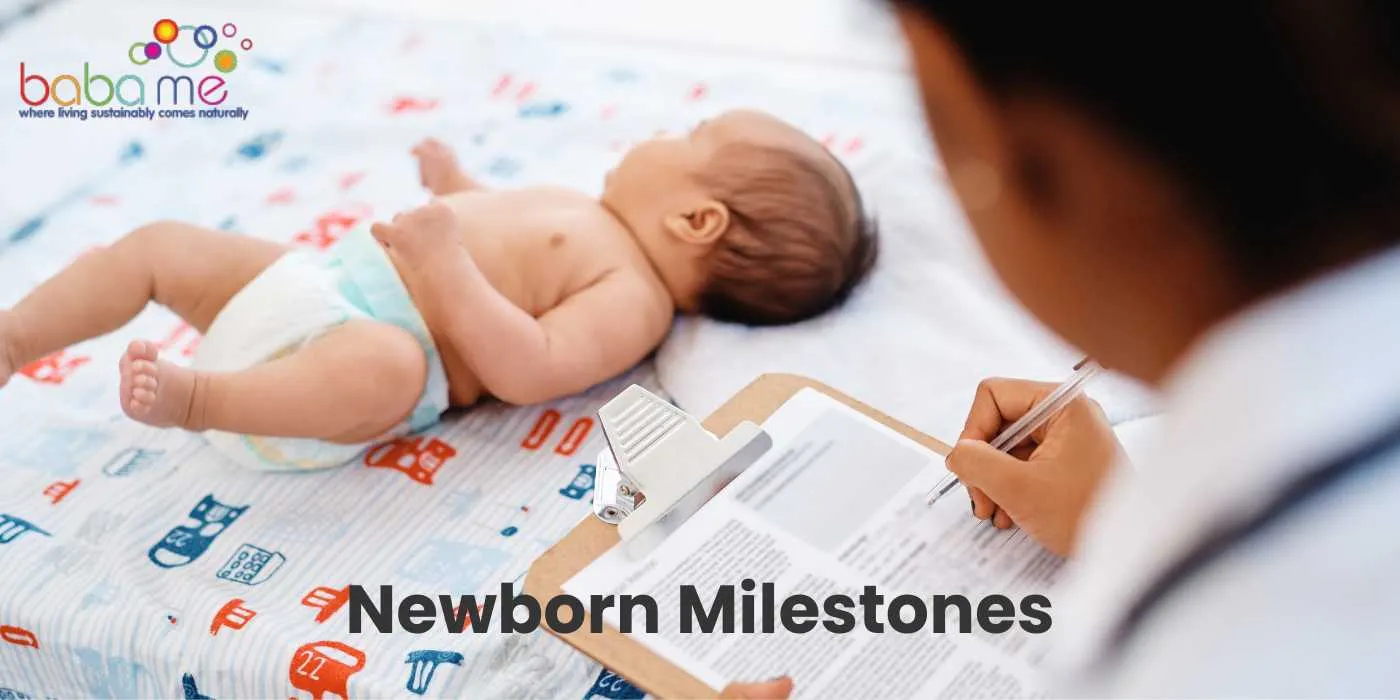The first year of a baby’s life is full of remarkable growth and development. From their first smile to their first step, each milestone is a thrilling experience for both parents and the little person themselves.
Welcome to our guide on what to expect during your newborn’s first year, where we’ll walk you through these magical moments and the the key baby development milestones, week by week, so you know just what to look forward to!
A Week-by-Week Guide to Your Baby’s Milestones
This week-by-week guide will help you navigate your baby’s growth in the first year, providing a comprehensive look at the major milestones to expect.
| Week | Baby Milestones |
|---|---|
| 1-4 | Newborn reflexes, starts recognizing parents’ voices, begins to focus on faces close by |
| 5-8 | Smiles responsively, starts cooing, holds head up for short periods |
| 9-12 | Begins to grasp objects, follows moving objects with eyes, may start rolling over |
| 13-16 | May start sitting with support, laughs out loud, shows interest in mirror images |
| 17-20 | Begins to reach for toys, may roll over in both directions, recognizes familiar faces |
| 21-24 | Sits without support, starts to crawl, may begin babbling (like “ba-ba”, “da-da”) |
| 25-28 | May start pulling to stand, waves bye-bye, understands simple words |
| 29-32 | Begins to use simple gestures, may start walking with assistance, starts pointing at things |
| 33-36 | May start to walk alone, begins to imitate others, can follow 1-step verbal commands |
| 37-40 | Can say a few words, begins to use objects correctly (like combing hair), may start running |
| 41-44 | Begins to explore, can point to things when named, shows affection to familiar people |
| 45-48 | Can say several single words, may start combining words, follows simple instructions |
| 49-52 | Walks up steps, begins make-believe play, can say 2-3 word sentences |
The first four weeks are dominated by reflex actions, and newborns start recognizing the soothing voices of their parents. In response to bold patterns and faces (use black and white toys for babies), the baby’s eyes and their muscles get a workout, though some may appear cross-eyed at times; this is completely normal and just baby’s brain taking it all in.
By weeks 5 to 8, most babies offer their first smile, a big deal for any new parent. This is also when babies start cooing, indicating the development of their vocal cords and brain.
By week 9 to 12, a baby’s movements become slightly smoother. Baby’s ability to grasp objects begins, demonstrating the development of their pincer grasp. Their neck muscles become stronger too, which helps them hold their head up for short periods.
Around this time, you’ll notice baby sleeps a fair amount, essential for their healthy development, let them fall asleep when they need to, don’t worry about sleep training yet!
Weeks 13 to 16 often see the baby starting to sit with support, an important step in physical development. This milestone is indicative of the strengthening of their core muscles.
During this period, many babies also start to laugh out loud, revealing their developing sense of joy and humor, or even cry during a diaper change which may have distubred them.
By weeks 25 to 28, most babies are sitting without support, showing the development of balance and coordination. Some might even start pulling to stand, indicating improved muscle strength. These are also weeks when babies reach a critical milestone in their communication skills: they start understanding simple words and waving “bye-bye”. They should also have doubled their birth weight by 29 weeks.
Towards the end of the year, around weeks 49 to 52, your baby will probably be making their first independent steps, marking a significant leap in their physical development. Their vocabulary will likely include a few words, and they may even start forming simple sentences.

Weeks 1-4: The Newborn Stage
The First Cry Upon entering the world, your baby’s first cry serves as a sign that their lungs are functioning properly. This is a critical first milestone, as it signals that they are adjusting to life outside the womb.
Rooting Reflex During the first few weeks, your baby will display the rooting reflex, an innate response to search for nourishment. When their cheek is stroked, they will instinctively turn their head and open their mouth to latch onto a nipple.
Tracking Movements By week 4, your baby’s vision will have developed enough to track moving objects with their eyes. To encourage this skill, try moving a colorful toy or your face slowly from side to side within their line of sight.
Weeks 5-8: Developing Social Skills
Social Smiles Your baby’s first social smile is a heartwarming milestone. Typically occurring between weeks 5 and 8, they will begin to smile in response to your voice or face. Engage with your baby often to encourage this delightful behavior.
Cooing Sounds During this period, your baby will start making cooing sounds, signaling the beginning of their language development. Encourage communication by talking, singing, and reading to them daily.
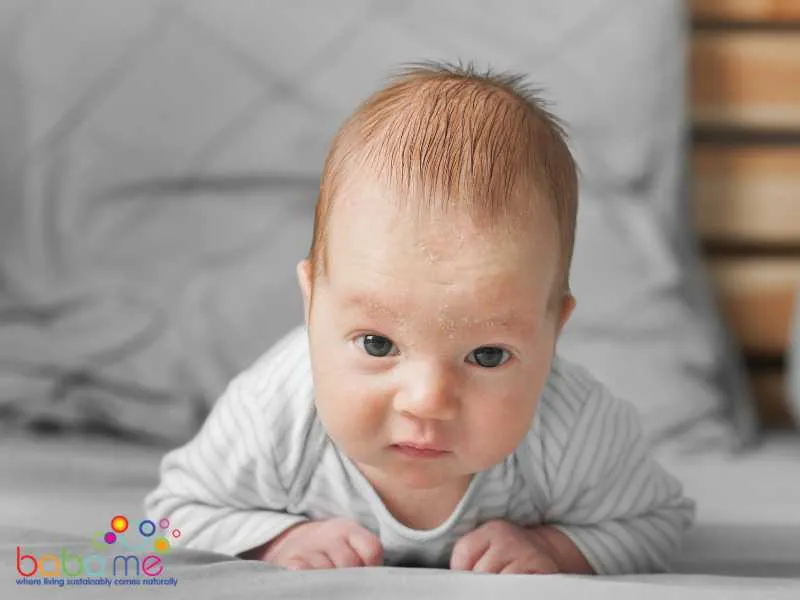
Weeks 9-12: Motor Skills Progression
Head Control By weeks 9 to 12, your baby will have developed the strength to hold their head up while lying on their stomach. Encourage this skill through tummy time sessions.
Grasping Objects Around this time, your baby will begin to grasp and hold onto objects. Provide toys that are easy to grip, like soft blocks or rattles, to support this new skill.
Weeks 13-16: Sleep and Play Patterns
Establishing Sleep Routines Your baby will begin to develop more predictable sleep patterns by weeks 13 to 16. Establish a consistent bedtime routine to encourage healthy sleep habits.
Reaching for Toys At this stage, your baby will start reaching for toys and other objects within their reach. Support their curiosity by placing age-appropriate toys nearby during playtime.
Weeks 17-20: Sensory and Language Development
Responding to Sounds Your baby will become more aware of their environment, responding to sounds with increased interest. Play music or make various sounds to stimulate their auditory development.
Babbling Begins As your baby’s language skills continue to progress, they will begin babbling. This marks an important step toward speaking, so engage with your baby and encourage their attempts at communication.
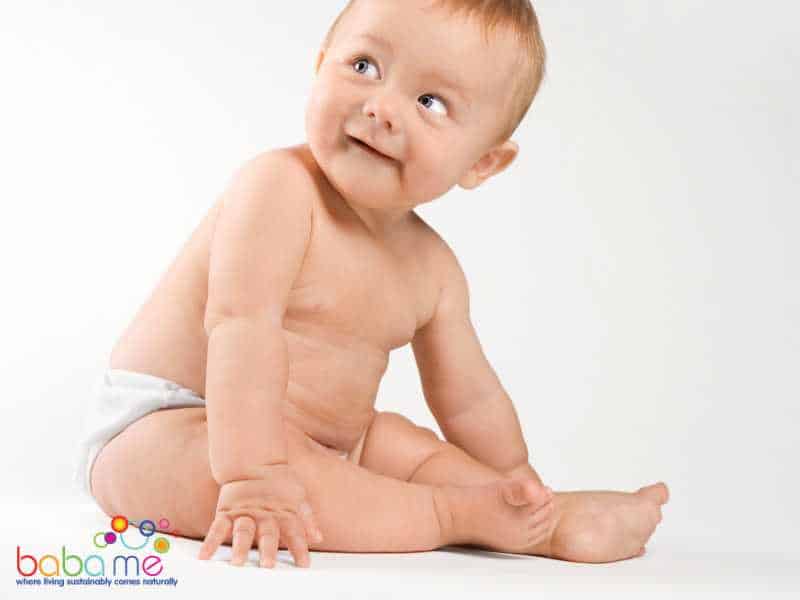
Weeks 21-24: Sitting Up and More
Sitting Up Unassisted By weeks 21 to 24, your baby will likely develop the ability to sit up unassisted. Provide support as needed and ensure their environment is safe for exploration.
Object Transfers During this time, your baby will also begin transferring objects from one hand to the other. This is an essential skill for developing hand-eye coordination and fine motor skills.
Weeks 25-28: Crawling and Interactions
Crawling Begins As your baby’s muscles strengthen, they will start crawling between weeks 25 and 28. Encourage their newfound mobility by providing a safe, open space for exploration.
Imitating Gestures Your baby will also begin imitating simple gestures, such as clapping and waving. Engage in interactive play to support their social and cognitive development.
Weeks 29-32: Standing and Problem Solving
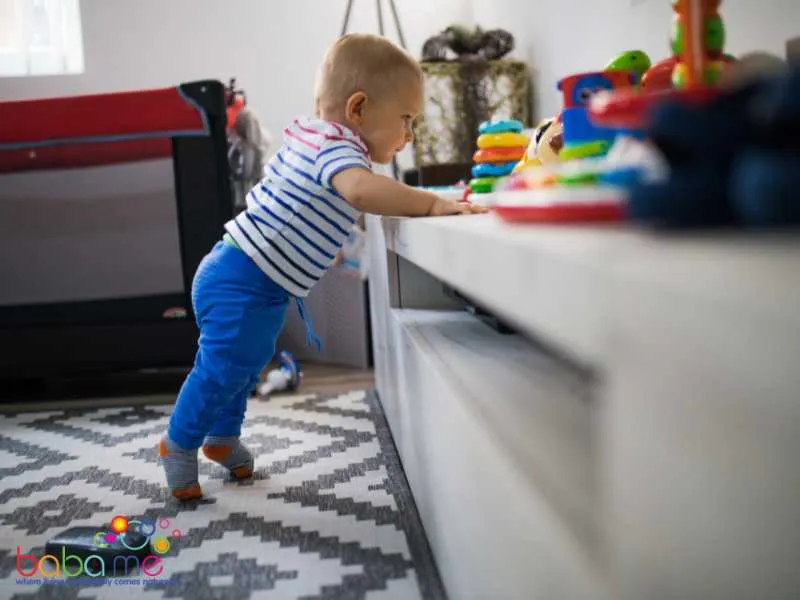
Pulling Up to Stand Around weeks 29 to 32, your baby will develop the strength and coordination to pull themselves up to a standing position. Ensure their environment is secure and free of hazards as they explore.
Basic Problem Solving During this time, your baby will begin to demonstrate basic problem-solving skills, such as fitting shapes into a shape-sorter toy. Provide opportunities for them to practice these skills through age-appropriate toys and activities.
Weeks 33-36: First Steps and Vocabulary
Taking First Steps As your baby approaches their first birthday, they may take their initial steps unassisted. Celebrate this milestone and continue to support their mobility in a safe environment.
First Words Between weeks 33 and 36, your baby may also begin to say their first words, such as “mama” or “dada.” Encourage their language development by speaking to them frequently and naming objects in their environment.
Weeks 37-40: Advanced Problem Solving and Imitation
Advanced Problem Solving During these weeks, your baby’s problem-solving skills will continue to improve. They may start to stack blocks or place rings on a peg in the correct order. Offer a variety of toys and activities to challenge their growing cognitive abilities.
Imitating Sounds and Actions Your baby will become more adept at imitating sounds and actions, further enhancing their language and social skills. Engage in interactive play and encourage their imitation efforts.
Weeks 41-44: Finger Foods and Emotional Development
Self-Feeding Finger Foods By weeks 41 to 44, your baby will likely be able to feed themselves finger foods. Introduce soft, easy-to-grasp options and always supervise mealtime to ensure safety.
Emotional Development Your baby will begin to exhibit a greater range of emotions, such as frustration, joy, and curiosity. Support their emotional development by validating their feelings and offering comfort as needed.
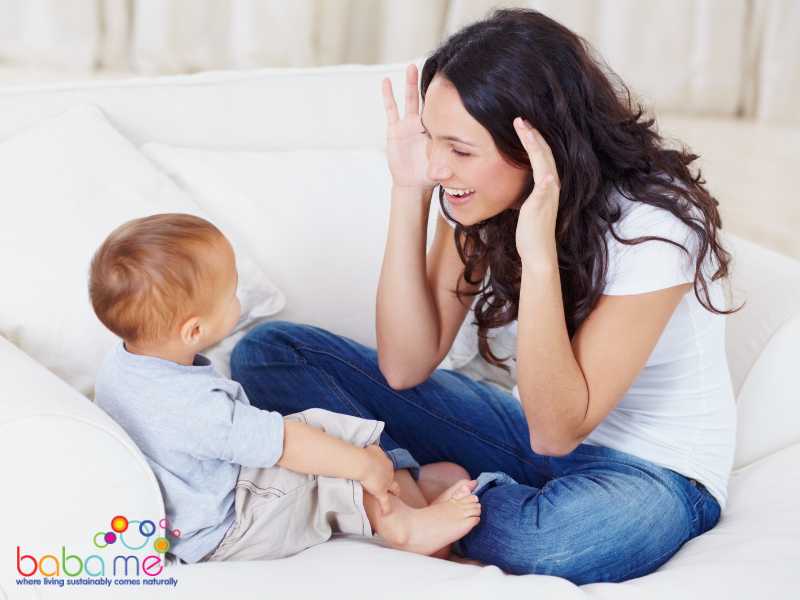
Weeks 45-48: Object Permanence and Pretend Play
Understanding Object Permanence As your baby approaches the end of their first year, they will develop an understanding of object permanence, the concept that objects continue to exist even when out of sight. Play games like peek-a-boo to reinforce this understanding.
Engaging in Pretend Play Your baby will also start to engage in simple pretend play, such as mimicking phone conversations or feeding a doll. Encourage their creativity and imagination through play.
Physical Milestones
Newborns go through many physical milestones during their first few months of life. These milestones are essential for their growth and development. This section will discuss the two main areas of physical development in newborns: motor development and sensory development.
Motor Development
Newborns experience significant physical growth and development during the first few months of life. This period is crucial for laying the foundation for their future abilities and overall well-being. This comprehensive overview will delve into the two main aspects of physical development in newborns: motor development and sensory development.
Motor Development: Building Strength and Coordination
Motor development encompasses a newborn’s ability to control and refine their body movements. Throughout the first few months of life, newborns master a variety of motor skills, including:
Head Control Newborns gradually develop the strength to hold their head up for brief intervals when positioned on their stomach. This crucial skill is the basis for future motor milestones, such as sitting up and crawling.
Arm and Leg Movements During this period, newborns gain the ability to actively kick and wave both their arms and legs while lying on their back. These movements help build muscle strength and coordination that will be essential for crawling, walking, and other physical activities.
Grasping Objects As their fine motor skills develop, newborns can grasp objects, such as fingers or toys, with increasing dexterity. This skill will later enable them to manipulate objects, feed themselves, and perform various tasks with their hands.
Rolling Over Newborns gradually acquire the strength and coordination to roll over from their stomach to their back and vice versa. This milestone marks a significant step toward independent mobility, as it paves the way for crawling and other forms of movement.
Sensory Development
Sensory development refers to the development of a newborn’s senses. Newborns are born with all their senses, but they are not fully developed. During the first few months of life, newborns develop their senses, such as:
Hearing: Newborns can recognize their mother’s voice and other familiar sounds.
Sight: Newborns can see objects close to their face, but their vision is blurry.
Taste and smell: Newborns can taste and smell different flavors and scents. They may prefer sweet flavors and recognize the smell of their mother’s breast milk.
Touch: Newborns can feel different textures and temperatures.
Visual Development Newborns have limited visual acuity at birth, but their vision rapidly improves over the first few months. They gradually develop the ability to focus on objects, track movement, and discern colors and shapes.
Auditory Development A newborn’s hearing is functional at birth, but their ability to localize sounds and distinguish between different voices and noises improves over time. Engaging in conversation and exposing your baby to various sounds can help support their auditory development.
Tactile Development Newborns have a heightened sense of touch and can be soothed by gentle stroking, cuddling, and skin-to-skin contact. As their tactile development progresses, they become more aware of different textures and temperatures, which helps them explore their environment.
Olfactory and Gustatory Development Newborns possess a keen sense of smell and taste, which allows them to recognize their mother’s scent and show preferences for specific flavors. Over time, these senses continue to refine, helping babies develop an awareness of different smells and tastes.
Cognitive Milestones
Language Development: The Journey to Communication
During the first year, infants progress remarkably in their language abilities. Key milestones in language development include:
Cooing and Vocalization (2 Months) At around two months old, infants begin to coo and make various sounds. This early form of communication is an essential precursor to more advanced language skills.
Babbling and Familiar Voice Recognition (6 Months) By six months old, infants start babbling, experimenting with different sounds and tones. They also become increasingly capable of recognizing familiar voices, such as those of their parents or caregivers.
First Words (9 Months) Around nine months old, infants may utter their first word, such as “mama” or “dada.” This significant milestone marks the beginning of their journey toward verbal communication.
Simple Words and Commands (12 Months) By the end of their first year, infants may be able to say a few simple words and understand basic commands, such as “no” or “come here.” This growing vocabulary and comprehension pave the way for more complex language development in the coming years.
Social Development: Building Connections and Understanding
Infants also experience significant growth in their social skills during their first year. Major milestones in social development include:
Smiling and Facial Recognition (2 Months) At around two months old, infants start to smile and respond to faces. This early form of social interaction helps them bond with their caregivers and develop an understanding of emotions.
Familiar Face Recognition and Separation Anxiety (6 Months) By six months old, infants can recognize familiar faces and may start to exhibit separation anxiety when apart from their primary caregivers. This behavior signifies their growing attachment and emotional connection to the people around them.
Stranger Anxiety and Preference for Familiar People (9 Months) Around nine months old, infants may begin to display stranger anxiety, showing a preference for familiar individuals and hesitance around unfamiliar people. This developmental milestone reflects their evolving understanding of social relationships and trust.
Imitation and Interactive Play (12 Months) By the end of their first year, infants may start to imitate others and engage in simple interactive games like peek-a-boo. This burgeoning ability to mimic actions and play cooperatively is an essential foundation for future social and cognitive development.
It’s important to remember that every child develops at their own pace, and these milestones are simply general guidelines. If you have concerns about your child’s development, it’s crucial to consult your pediatrician for guidance and support.
Emotional Milestones
Newborns experience a wide range of emotions, and it is important for parents to be aware of their baby’s emotional milestones. Here are some of the emotional milestones parents can expect their newborn to reach:
Bonding with caregivers: Newborns are capable of bonding with their caregivers from the moment they are born. They will begin to recognize their parents’ voices, faces, and smells, and will seek comfort from them when they are upset or in need of attention.
Responding to stimuli: Newborns will respond to stimuli such as light, sound, and touch. They may startle at loud noises or become calm when they hear a familiar voice.
Expressing emotions: Although newborns cannot yet express their emotions verbally, they will communicate their feelings through facial expressions and body language. They may show excitement by kicking their legs and waving their arms, or display distress by crying and arching their backs.
It is important for parents to respond to their baby’s emotional needs and provide comfort and reassurance when needed. This will help build a strong bond between the baby and their caregivers, which is essential for healthy emotional development.
Watching your baby’s growth and development during their first year is a rewarding journey. However, it’s important to remember that every baby is unique, and some may reach certain milestones earlier or later than others. Always prioritize safe sleep practices to reduce the risk of sudden infant death syndrome (SIDS), and keep in touch with your pediatrician or lactation consultant to ensure your baby’s development is on track.
FAQs for Infant Developmental Milestones
What are the 3 biggest milestones of a newborn?
The three biggest developmental milestones of a newborn baby are head control, social smiling, and the development of gross motor skills. These milestones represent significant progress in a newborn baby’s physical, emotional, and cognitive development.
What are some milestones for a newborn?
Some key milestones for a newborn include lifting their head during tummy time, grasping objects, smiling in response to a caregiver’s face, cooing and babbling, and developing the ability to track moving objects with their eyes.
What newborn weeks are the hardest?
The first few weeks (0-6) can be the hardest for both the newborn and the parents as everyone adjusts to the baby’s life outside the womb. This period typically involves frequent feeding, diaper changes, and sleep disturbances, as the baby and the parents learn to navigate this strange new world.
What should a 2-week-old baby be doing?
A 2-week-old baby should be able to lift their head briefly during tummy time, have reflexive movements in their arms and legs, respond to loud sounds, and have a healthy number of wet and poopy diapers. At this stage, the baby’s umbilical cord stump may also fall off, requiring proper umbilical cord care.
What is the hardest newborn week?
The first week can be particularly challenging as the baby and the parents adjust to their new roles. Parents may feel overwhelmed and sleep-deprived, while the baby is getting used to their new environment, frequent feedings, and the sensation of being swaddled or held.
What is a newborn’s first milestone?
A newborn’s first milestone is often the development of head control, which occurs when they can lift and hold their head up during tummy time. This crucial skill sets the foundation for future milestones, such as sitting up, crawling, and walking.

